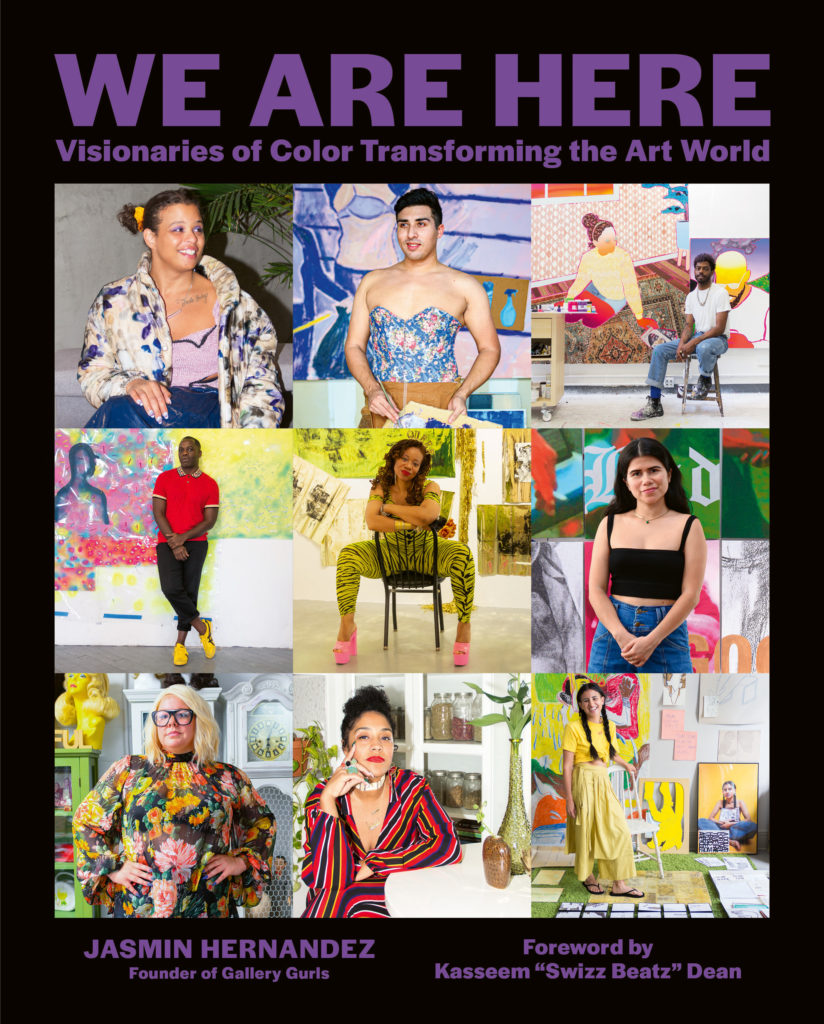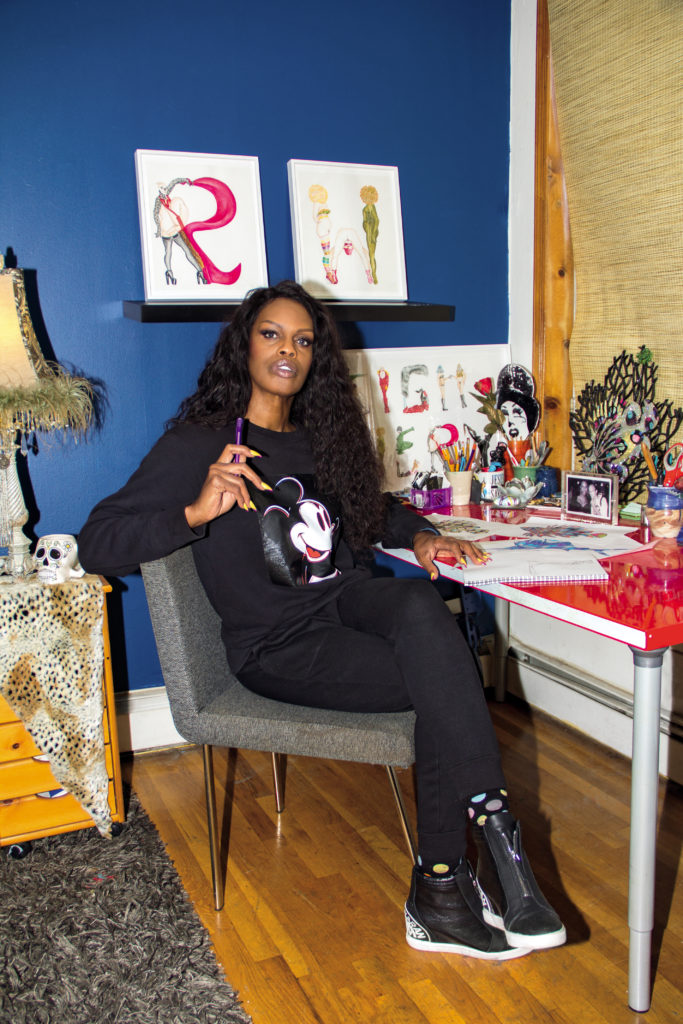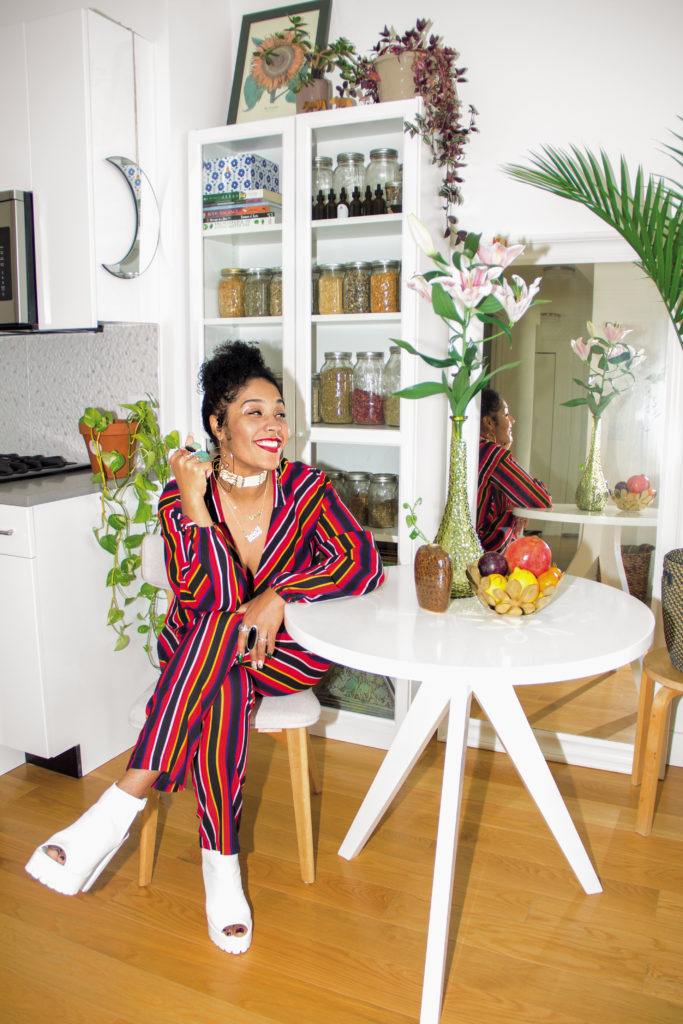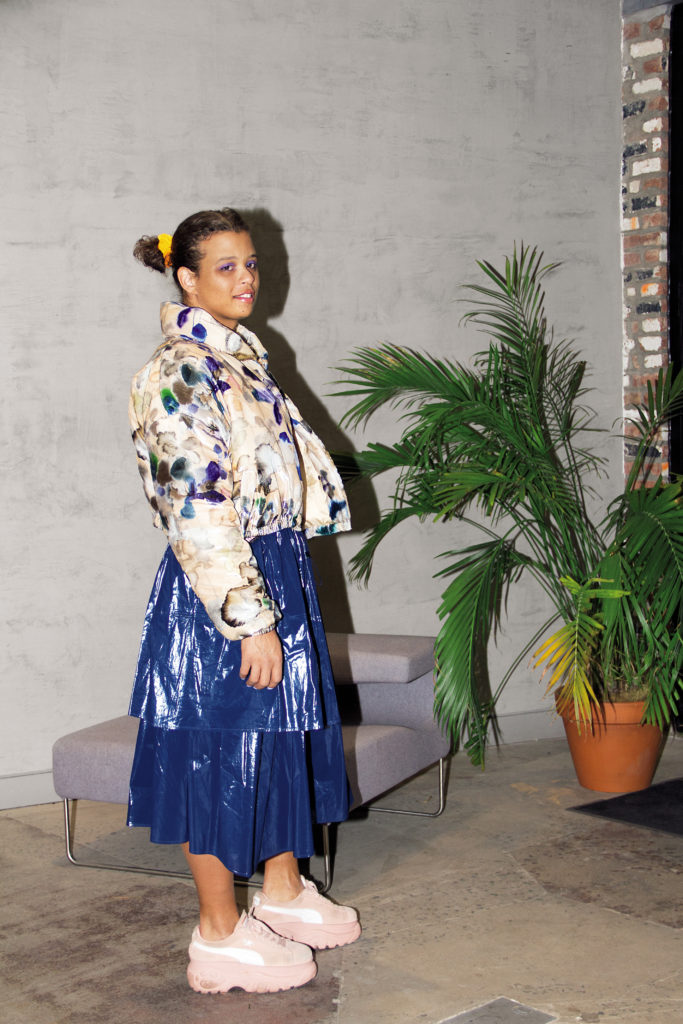Before I met Jasmin Hernandez in-person for the first time, I was introduced to her digitally — specifically through her groundbreaking website Gallery Gurls. Focused on amplifying the work of womxn of color artists and art workers, Hernandez launched her site in 2012 as an antidote to the white-male-centered art world.
A study conducted by Williams College revealed that 85.4% of the works in the collections of 18 major U.S. museums are created by white artists and, more specifically, 87.4% are by men. Meanwhile, African-American artists make up 1.2% of the works, Hispanic and Latinx artists make up 2.8% of the artists, and Asian artists account for 9%.
The Black Latinx founder and editor in chief of Gallery Gurls saw the void in the industry firsthand. Hernandez’s efforts documenting womxn and artists of color on her well-known digital platform over the years led to a deal with Abrams Books. In We Are Here: Visionaries of Color Transforming the Art World, which published in February 2021, she invites readers into the work of 50 artists and art workers of color, with a focus on queer, trans, nonbinary, and Black, Indigenous, and women of color, or BIWOC.

We Are Here: Visionaries of Color Transforming the Art World. By Jasmin Hernandez. Published by Abrams.
©2021 Jasmin Hernandez
A year after publishing her stunning, coffee table book, I caught up with the Afro-Dominican Yorker to reflect and discuss her journey to creating We Are Here:
How do you feel a year after publishing We Are Here: Visionaries of Color Transforming the Art World?
There has been massive love online and on social media, which is so touching to see. A year later, it still feels surreal to walk into a bookstore or museum shop and see they carry We Are Here. It feels like a great accomplishment — can’t lie about that. But I’m most happy that the 50 brilliant, groundbreaking Black and POC artists and art workers in the book are thoughtfully and carefully presented in one book. I’m glad that anyone — but specifically, a young Black person who seeks a place in the contemporary art space — can view this book as a guide or roadmap.
Your writing journey began with a personal blog you created then folded, and then continued with Gallery Gurls, a site where you’ve profiled the likes of Firelei Báez, Luna Luis Ortiz and Ayana Evans — all of whom are featured in We Are Here. How did you bring this idea from concept to a deal with Abrams?
For years, people had been planting the seed in my head that I should turn Gallery Gurls into a book, so that idea was always brewing. I just didn’t know how to execute it. In 2018, I connected with a non-fiction agent who instantly saw the potential of a Gallery Gurls-type book. When we approached Abrams, they were instantly interested and we easily found that we were the right match as author and publisher. They saw We Are Here as a book that fit into their roster of books.
As a debut author, what lessons have you learned throughout this process?
I knew from the beginning of my author journey to not solely lean on my publisher, particularly since I’m the only Black person in the entire process. I ideated my own solutions, collabs, marketing, press, and virtual event experiences. We each had our own sets of expertise and strengths, so combining those together between us was ideal. The publisher’s strengths are logistics, structure, and traditional publishing support, and my forte is my community and rich network of BIPOC creators, writers, journalists, and culture makers where we can create meaningful cultural exchanges about We Are Here.
The space that you document — the art world — is very white and overall non-inclusive. However, you’ve made the commitment to seek out BIPOC, particularly queer, trans, nonbinary, and BIWOC, through the narratives that you document. What has kept you going in your commitment to uplift and highlight the stories of BIPOC artists and creatives?
I see Gallery Gurls as a digital archive of Black and POC stories in contemporary art. We Are Here continues that; it’s basically Gallery Gurls in print. The richness of documenting QTBIPOC artists and art workers, like Tourmaline, KT Pe Benito, Devan Shimoyama, Kia LaBeija, Untitled Queen, Suhaly Bautista-Carolina, Lauren Argentina Zelaya, Lola Flash, Mohammed Iman Fayaz, Jay Lynn Gomez, Connie Fleming, and others, isn’t only an obligation, but a pleasure. If we don’t, who will? What keeps me going is all the ways they keep the world moving. How they rupture binaries and boundaries.
It was also important that as a Black Latinx cis-hetero author, I looked beyond BIPOC cis-hetero subjects. That was key.
- Connie Fleming / page 46: Connie Fleming in her primary-colored workspace in artist Kevin McHugh’s apartment in New York City. Photograph by Sunny Leerasanthanah © 2021 Jasmin Hernandez
- Firelei Báez / page 88: Firelei Báez in her Bronx studio, wearing an Akris jacket, surrounded by her epic art, all works in progress. Photograph by Sunny Leerasanthanah © 2021 Jasmin Hernandez
- Kia LaBeija / page 146: Kia LaBeija during her residency at Performance Space New York in the East Village, New York City. Photograph by Sunny Leerasanthanah © 2021 Jasmin Hernandez
- Suhaly Bautista-Carolina / page 190: Gorgeous in red, Suhaly Bautista-Carolina is surrounded by plants and herbs in her bright Brooklyn apartment. Photograph by Sunny Leerasanthanah © 2021 Jasmin Hernandez
- Tourmaline / page 142: The fierce and resilient Tourmaline at A/D/O by MINI in Brooklyn. Photograph by Sunny Leerasanthanah © 2021 Jasmin Hernandez
We Are Here is a groundbreaking book. What do you hope will come from this contribution to the art literature canon?
If We Are Here is still being referenced in 20 years, then that’s big for me. If this book has lived in libraries, has been assigned on college syllabi, constantly seen in bookstores, purchased online, shared on social media, is a go-to art book rec via word of mouth between friends, sits on people’s coffee tables, has become dog-eared from long-term wear and reading, then that’s all I can really hope for — and it makes me incredibly grateful.
What’s next?
I want to story tell in other genres, for sure. I see fiction in my future (a few novels with an Afro-Dominican-American woman protagonist!), and more non-fiction. Maybe a memoir or book of personal essays on Black Latina womxnhood.
Note: Hernandez’s portrait was also taken by Sunny Leerasanthanah.









